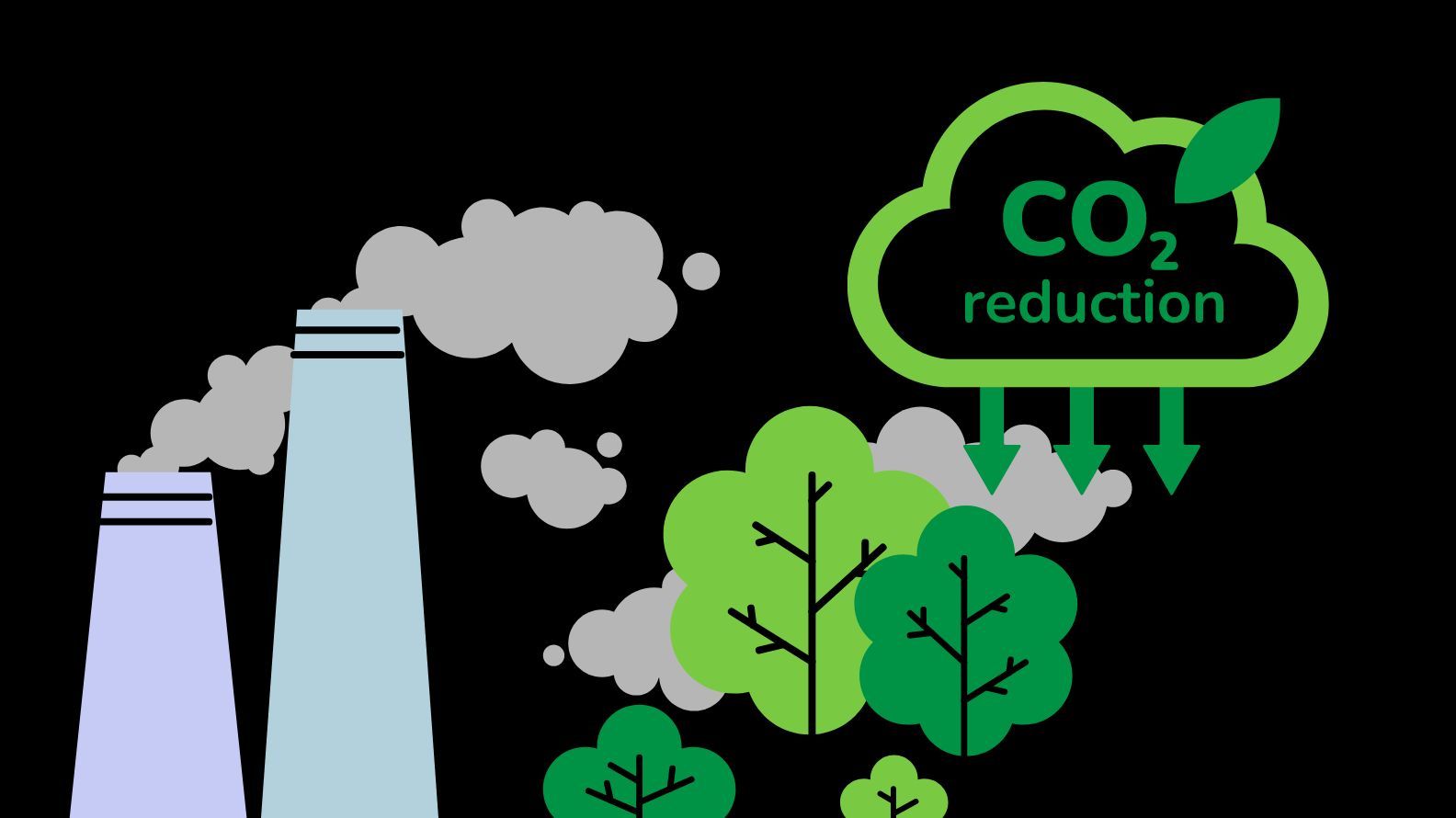Carbon Offsetting For Businesses – How Does It Work?

Carbon offsetting for businesses plays a vital role in the fight against climate change. As companies recognize the need to reduce their carbon footprint, they understand that not all emissions can be avoided. This is where carbon offsetting comes into play. By compensating for emissions that are difficult to eliminate, businesses can achieve net-zero goals and contribute to global efforts to mitigate climate change. In this article, we’ll explore how carbon offsetting for businesses works, why it’s essential, and how companies can effectively implement carbon offsetting strategies.
What is Carbon Offsetting?
Carbon offsetting is the process of compensating for greenhouse gas emissions by funding projects that either reduce emissions elsewhere or remove carbon from the atmosphere. These projects often involve renewable energy, reforestation, or energy efficiency initiatives, which help to balance out the emissions produced by an organization.
In essence, carbon offsetting allows businesses to achieve net-zero emissions by neutralizing the impact of their unavoidable carbon output.
Why is Carbon Offsetting Important for Businesses?
Businesses contribute significantly to global carbon emissions through their operations, supply chains, and logistics. While companies can reduce their carbon output through internal measures such as adopting energy-efficient practices or switching to renewable energy sources, achieving zero emissions without carbon offsetting is nearly impossible. Here’s why carbon offsetting is crucial:
Achieving Net-Zero Goals
Offsetting enables businesses to account for the emissions they cannot eliminate, helping them achieve their net-zero or carbon-neutral targets.
Environmental Responsibility
By participating in carbon offsetting, businesses demonstrate their commitment to sustainability and responsible environmental practices, enhancing their reputation.
Compliance with Regulations
As governments around the world introduce stricter environmental regulations, carbon offsetting provides a way for businesses to meet emission reduction targets without compromising their operations.
Attracting Investors and Customers
Companies that prioritize sustainability are more attractive to environmentally conscious consumers and investors. Carbon offsetting for businesses demonstrates a long-term commitment to reducing environmental impact.

How Does Carbon Offsetting for Businesses Work?
The process of carbon offsetting for businesses typically involves the following steps:
Calculate Carbon Emissions
The first step for any business is to calculate its total carbon footprint. This involves measuring the emissions generated from direct activities, such as energy consumption, transportation, and manufacturing, as well as indirect emissions from the supply chain.
Carbon accounting software or consultancy services can help businesses identify their total emissions, typically measured in tons of carbon dioxide equivalent (CO2e).
Set Reduction Targets
Once a company knows its carbon footprint, it needs to set realistic and achievable carbon reduction targets. This could involve switching to renewable energy, improving energy efficiency, or reducing waste. However, since it’s often impossible to eliminate all emissions, businesses will need to rely on carbon offsetting to achieve their overall goals.
Purchase Carbon Offsets
Carbon offsets are purchased to compensate for unavoidable emissions. Businesses can buy carbon credits from certified projects that reduce or capture emissions, such as:
- Reforestation Projects: Planting trees to absorb CO2 from the atmosphere.
- Renewable Energy Projects: Investing in wind, solar, and hydroelectric power projects that displace the use of fossil fuels.
- Energy Efficiency Projects: Funding projects that improve energy efficiency in communities, reducing the need for high-carbon energy sources.
- Methane Capture Projects: Capturing methane from landfills and converting it into usable energy.
Each carbon credit usually represents one metric ton of CO2 removed from the atmosphere. By purchasing enough credits, businesses can offset their own emissions.
Verification and Certification
It’s crucial for businesses to ensure that the carbon credits they purchase come from verified and certified projects. International standards such as the Verified Carbon Standard (VCS) or the Gold Standard ensure that the projects are legitimate and measurable, and result in real emission reductions.
Report and Communicate
Transparency is key when implementing a carbon offsetting strategy. Businesses should report their carbon-offsetting efforts to stakeholders, customers, and investors. This can be done through sustainability reports, press releases, or by publishing results on the company’s website.
By clearly communicating carbon offset efforts, businesses can build trust and enhance their brand reputation.
Types of Carbon Offset Projects
Businesses can choose from various carbon offset projects based on their preferences and alignment with sustainability goals. Here are the most common types of projects:
Renewable Energy Projects
Investing in renewable energy such as wind farms, solar panels, or hydropower plants helps reduce reliance on fossil fuels and mitigates greenhouse gas emissions on a large scale.
Reforestation and Afforestation Projects
These projects focus on planting trees or restoring degraded forests, which absorb CO2 from the atmosphere as they grow. Reforestation is a long-term solution for offsetting emissions while preserving biodiversity.
Community-Based Energy Efficiency
Many carbon offset projects focus on improving energy efficiency in low-income communities, reducing the need for high-emission energy sources. For example, installing energy-efficient stoves or providing access to clean energy solutions helps reduce CO2 emissions and improves quality of life.
Landfill Gas Capture
Landfills emit methane, a potent greenhouse gas, as waste decomposes. By capturing and converting landfill gas into energy, these projects prevent methane from being released into the atmosphere while generating a renewable energy source.

Benefits of Carbon Offsetting for Businesses
Carbon offsetting offers numerous benefits to businesses looking to improve their sustainability efforts. Here are some of the key advantages:
Improved Brand Reputation
Companies that engage in carbon offsetting are viewed as environmentally responsible, which can attract customers, investors, and talent.
Regulatory Compliance
Many governments are setting emission reduction targets and carbon offsetting allows businesses to meet these requirements without disrupting operations.
Cost Savings
Carbon offsetting can be a cost-effective alternative to reducing emissions through expensive operational changes.
Contribute to Global Climate Goals
Offsetting carbon emissions allows businesses to contribute to global efforts to limit global warming to below 2°C.
The Role of BNZ Green in Carbon Offsetting
At BNZ Green, we offer businesses comprehensive solutions for achieving their sustainability goals, including carbon offsetting for businesses. Our services are designed to help organizations of all sizes and sectors to minimize their carbon footprints and contribute to global decarbonization efforts. Here’s how we can help:
Carbon Portfolio Management
We assist businesses in identifying and managing their carbon portfolios, ensuring they are aligned with the latest industry standards and regulations.
Net Zero Consultancy
Our team of experts provides businesses with strategies to reduce their emissions and achieve net-zero targets.
Carbon Credit Marketplace
Through our blockchain-powered platform, the BNZ X Marketplace, businesses can trade, exchange, and invest in certified carbon credits from trusted projects globally.
Carbon Accounting and Calculation
We help companies measure and track their carbon emissions accurately, ensuring transparency and accountability in their offsetting efforts.
At BNZ Green, we believe that carbon offsetting for businesses is not just about compensating for emissions but about building a sustainable future. By choosing BNZ Green as your partner, your business can confidently pursue its sustainability goals while contributing to the global fight against climate change.
Ready to Offset Your Carbon Footprint?
Contact BNZ Green today to explore how we can help your business reduce its carbon emissions and achieve its net-zero objectives. Together, we can make a difference for the planet and future generations. Start your journey toward sustainability with BNZ Green!
